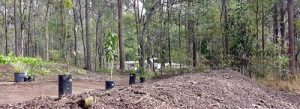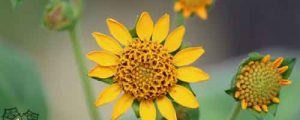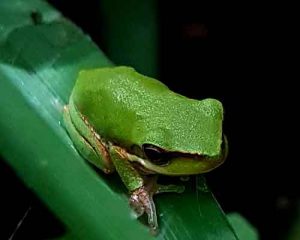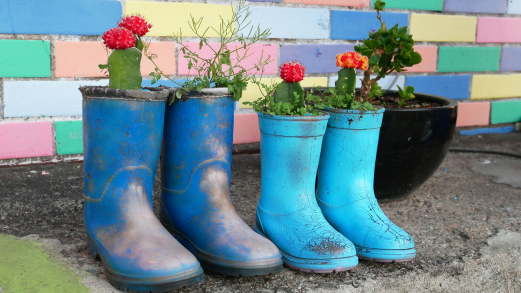Catching and storing water with contour banks is an important aspect of creating a garden which contributes to a sustainable planet.
Author Jane Frost from Jane Grows Garden Rooms in south-east Queensland writes:
When I started studying permaculture and sustainable gardening, I thought managing water was just about having rainwater tanks, a dam and conserving use in the home. My understanding of the concept of catching and storing water was simplistic. Now I feel I have a much better understanding and I have applied this new understanding to not only benefit my garden but to also improve the local ecosystem and manage what I “send downstream”. In managing water effectively I am also managing nutrients more effectively.
The greatest change in my garden has come about with the building of contour banks. This has helped me to slow the water on my sloping block when it rains and also to capture nutrients that previously ended up in our creek and ultimately our local river system and potentially the sea. It was a relatively simple process to build these banks. I also used elements of hügelkultur to make sure my banks were fertile and ready to feed the plants that would straddle them.
What is a contour bank?
A contour bank is an earthen structure that follows the ridges or contours on a cultivated slope. They are used to channel and slow water as it heads downhill. In the process, sediments and nutrients tend to build up on the uphill side of the structures.
What is Hügelkultur?
Hügelkultur is a German word associated with the practice of building raised garden beds filled with wood. The wood under the soil slowly decomposes releasing nutrients into the soil. The wood also acts like a sponge holding water for plants to access as they need it.
Contour Banks on My Property

We started by laying down old wood and sticks along a contour downhill from our chicken pen. Next we emptied the compost bins on top of the wood and also added manure purchased from a nearby horse farm. After this we used a small excavator to cover the pile generously with purchased topsoil. This was necessary as the slope has been grazed in the past and very little topsoil remained on the property when we purchased it. The final step was planting. I chose a native olive (Olea paniculata), a native elderberry (Sambucus australisica), anise myrtle (Syzigium anisatum), bay tree (Laurus nobilis), Bolwarra or native guava (Eupomatia laurina) and peanut tree (Sterculia quadrifida). Eventually these will form the canopy of our garden. I then scattered a permaculture mix of pak choi, radish, rocket and peas. These would be both for harvest and green mulch.
When the first heavy rains came we held our breath and observed. Success! The water reached the contour bank, slowed and pooled before slowly draining down the slope. The plants were thriving, apart from the Anise Myrtle which would eventually perish and be replaced with a Blood Orange Tree. I have collected some seeds from the mix I sowed, but also allowed it to self-seed. Two years later we are on our third crop from these plants.
About six months after the first contour bank was built, we built another about three metres below the first. It has been planted with mango trees, stone fruit trees and a lime tree as well as green mulch and cucurbits. It is growing as well as the first and showing a good capture of sediment.
In the coming months we are planning to put in a third downhill from the first two. Both contour banks show signs of excellent water retention and nutrient capture. I have not had to fertilise either bank and we are now getting regular harvests of tomatoes, cucumbers, nasturtium leaves and flowers, pumpkins and elderberries, as well as the crops from the permaculture mix.
The banks are alive with butterflies, bees and other bugs. I refuse to control the pests and take heart in the Butcher Birds, Kookaburras, Eastern Bearded Dragons and frogs that I regularly see snacking in that part of the garden. We are happy to check our salads for caterpillars and to eat holey leaves if it means a healthier crop and a contribution to our local ecosystem. The integrated crops are working well to isolate the rare occurrence of disease and prevent it impacting the whole crop of a particular species.
The contour banks almost take care of themselves. Of course, the fertility of the soil means that I have to manage the weeds and our climate means that we need to water sometimes, but the organic nature of the gardens is pleasing and rewarding. When we do water we use hoses attached to a fire pump in the dam. This water is full of nutrients (and sediment after rain) and it makes sense to return those nutrients to the slope rather than letting them flow downstream to impact on the water quality of our local river.

All in all contour banks have become an integral part of catching and storing water on our slope. With flowers, vegetables and trees sharing the space, it is a source of food

and joy for our whole family as we witness the different species of plants, insects and animals benefiting from managing one of our most important resources.
After all, water is life.
Related Articles:
Citizen Science: A Pathway to Gardening Success and Biodiversity Conservation
In recent years, the realm of science has experienced a remarkable transformation, one that invites people from all walks of life to participate…
A Sustainable Gardener’s Guide to Thrifty Gardening
Creating an eco-friendly and cost-effective garden involves more than just nurturing plants; it's about adopting a sustainable approach that…



